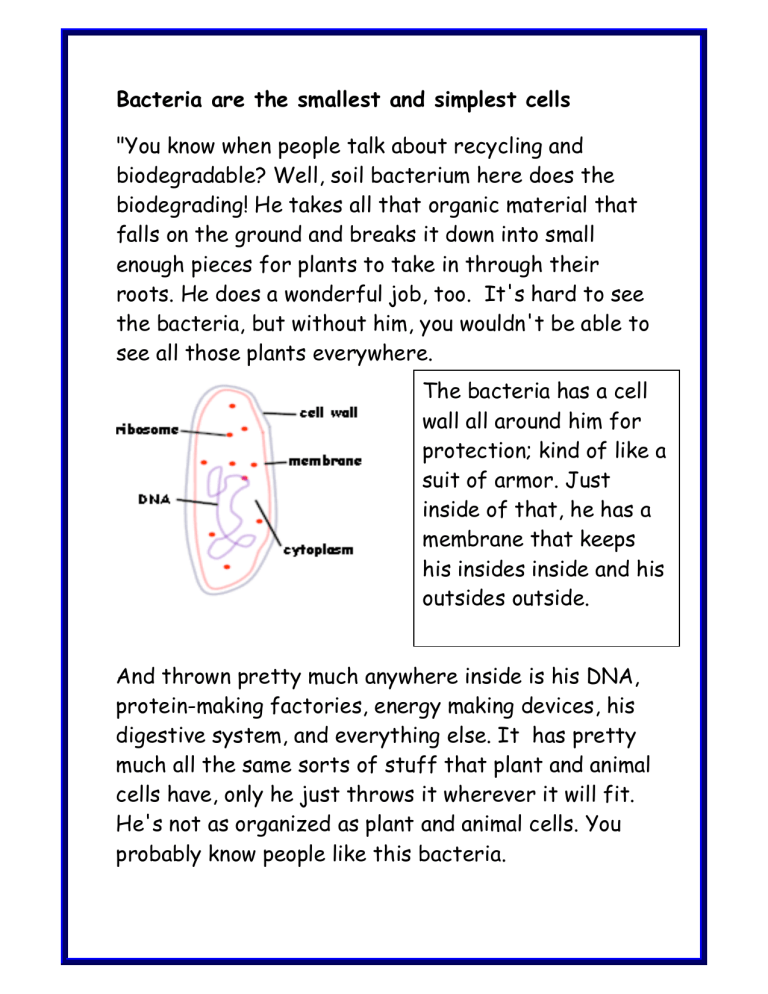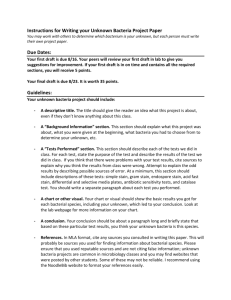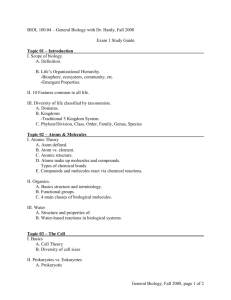Bacteria are the smallest and simplest cells "You know when people

Bacteria are the smallest and simplest cells
"You know when people talk about recycling and biodegradable? Well, soil bacterium here does the biodegrading! He takes all that organic material that falls on the ground and breaks it down into small enough pieces for plants to take in through their roots. He does a wonderful job, too. It's hard to see the bacteria, but without him, you wouldn't be able to see all those plants everywhere.
The bacteria has a cell wall all around him for protection; kind of like a suit of armor. Just inside of that, he has a membrane that keeps his insides inside and his outsides outside.
And thrown pretty much anywhere inside is his DNA, protein-making factories, energy making devices, his digestive system, and everything else. It has pretty much all the same sorts of stuff that plant and animal cells have, only he just throws it wherever it will fit.
He's not as organized as plant and animal cells. You probably know people like this bacteria.
the E. coli!
It does the same sort of thing that soil bacteria does, only Instead lives in animals' intestines instead of the ground. It probably knows some of the E.coli that are living in you right now! It also knows that bad branch of the E.coli family that cause people to get sick. After your stomach has had a chance to grind your latest meal, the food continues down to your intestines. That's where it helps you out. He takes some of the food your body can't digest and he digests it for you. He breaks down some of the big molecules of food into small molecules that are small enough for you to absorb. This works to both its and your advantage; you feed it and it helps you get more out of a meal!
Bacillus anthracis spores
Photo: Dept. of Defense
What causes anthrax?
Anthrax is caused by a bacterium (not a virus). More specifically, it's a rod-shaped bacterium that stains purple in a laboratory test.
Where are the bacteria found?
The bacteria live in and on infected animals, and in the soil. The bacteria can't survive long in the environment when they're in a growth stage. But when they form spores -- which they do when the environment changes (for example, when they run out of food) -- they can live in the soil for decades.
How do people get infected?
There are three forms of anthrax: inhalation (where the bacteria lodge deep in the lungs), cutaneous
(skin), and intestinal. By far the most common form is cutaneous (about 95 percent of cases).
THE WORLD OF ANIMALS IS REPRESENTED BY A FLY, A WORM, AMOUSE AND
HOMO SAPIENS
Figure 1-34/35: Drosophila melanogaster &Caenorhabditis elegans. Molecular genetic studies on this small fly have provided a key to the understanding of how all animals develop.
This small nematode worm lives in the soil. Its development, from the fertilized egg cell to the 959 cells of the adult body, has been traced in extraordinary detail, and a great deal is known about the underlying genetic mechanisms. Most individuals are hermaphrodites, producing both eggs and sperm.
mechanisms.
The human baby and the mouse shown here have similar white patches on their foreheads because they both have defects in the same gene (called kit ), required for the development and maintenance of pigment cells. (Courtesy of R.A. Fleischman, from
Proc. Natl. Acad. Sci. USA 88:10885-10889, 1991
Figure 1-36: Different living species share the same molecular
Cells in the same multicellular organism can be totally different. Yet all differentiated cell types are generated during embryonic development from a single fertilizied egg cell. We share the same molecular mechanisms!
Systems Biology
Over the last few years, there’s been an explosion of information in biology. The mapping of the human genome gave biologists unprecedented detail about some 30,000 to
40,000 genes. Efforts are also under way to identify the thousands—and potentially millions—of proteins encoded by those genes.
Researchers are now pursuing the next logical step in integrating all this data: systems biology.
The goal is to understand not just the functions of individual genes, proteins and smaller molecules like hormones, but to learn how all of these molecules interact within, say, a cell.
Biologists hope to then use this information to generate more accurate computer models that
physiology and the underlying mechanisms of disease. The biggest payoff: faster development of more-effective drugs. “This is really opening up a whole new world, a new way of doing things,” says Aram Adourian, director of advanced technologies at Beyond Genomics, a systems biology startup in Waltham, MA.
The Big Picture
Companies exploiting systems biology
Institute/Company Location Focus
Institute for Systems
Biology
Seattle,
WA
Understand human physiology and disease
Beyond Genomics
Lilly Center for
Systems Biology
SurroMed
Alliance for Cellular
Signaling
Waltham,
MA
Singapore
Mountain
View, CA
Dallas, TX
Identify new drug targets
Develop new drugs
Mine multiple biological data for new drug targets
Map all interactions between proteins in a cell








